World War II
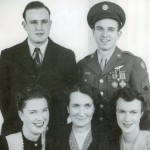
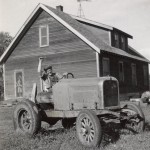 My uncle, Bill Spencer went home to be with the Lord on Christmas Day 2020. It isn’t the perfect day to lose a loved one, but I think it would be the perfect day to go home to Heaven. Instead of spending Christmas in a nursing home, alone because of Covid restrictions and sick with Covid, often not remembering most people, except maybe his kids, Uncle Bill got to spend Christmas with his parents, Anna and Allen Spencer, as well as his siblings, Laura Fredrick, Allen Spencer, and Ruth Wolfe…and most importantly, he got to spend Christmas with Jesus. How awesome is that!!
My uncle, Bill Spencer went home to be with the Lord on Christmas Day 2020. It isn’t the perfect day to lose a loved one, but I think it would be the perfect day to go home to Heaven. Instead of spending Christmas in a nursing home, alone because of Covid restrictions and sick with Covid, often not remembering most people, except maybe his kids, Uncle Bill got to spend Christmas with his parents, Anna and Allen Spencer, as well as his siblings, Laura Fredrick, Allen Spencer, and Ruth Wolfe…and most importantly, he got to spend Christmas with Jesus. How awesome is that!!
Uncle Bill and his little brother, my dad, Allen Spencer were very close growing up and into their later years too. Whenever they were together, you can bet the stories flew around the room. Their antics were crazy. When those two boys got together, all bets were off. They were farm kids, so they knew how to use dynamite to blow a tree stump out of a field…or to shorten a gate post by 3 or 4 inches or wake up the neighborhood at daybreak on July 4th.
They were intensely patriotic, and both were part of the war effort during World War II…Uncle Bill as a riveter 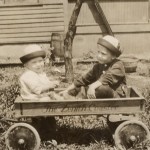
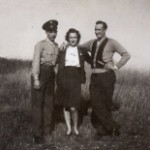 on ships and planes, and my dad as an airplane assembler and later, flight engineer and top turret gunner on a B-17. Not being able to serve was a great disappointment to Uncle Bill, who really wanted to go along with his little brother to fight the war. Thankfully, both were alive at its end, and because they were, my cousins Pam Wendling, Bill Spencer, and Jim Spencer got to have a dad, and my sisters, Cheryl Masterson, Caryl Reed, Alena Stevens, Allyn Hadlock and I got to exist.
on ships and planes, and my dad as an airplane assembler and later, flight engineer and top turret gunner on a B-17. Not being able to serve was a great disappointment to Uncle Bill, who really wanted to go along with his little brother to fight the war. Thankfully, both were alive at its end, and because they were, my cousins Pam Wendling, Bill Spencer, and Jim Spencer got to have a dad, and my sisters, Cheryl Masterson, Caryl Reed, Alena Stevens, Allyn Hadlock and I got to exist.
Uncle Bill was the family historian. He loved looking into his ancestry, and because he did, we all got to know so much, or about our family that we ever would have otherwise. He was sometimes helped with his nephews, Gene and Dennis Fredrick, and grandnephews Tim and Shawn Fredrick. Uncle Bill was meticulous with the family history, striving relentlessly to get everything down on paper (no computer for Uncle Bill) and to get it correct. He was a champion of family truth, and we are the beneficiaries…as are many cousins around the country.
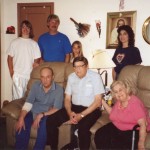

They have been back together for over a year in Heaven now, and I know that they and their sisters and parents are having the time of their lives. Nevertheless, we all miss them very much here on Earth, and look forward to seeing all of them again in Heaven. Today would have been Uncle Bill’s 100th birthday. It was a life well lived, and we were blessed to have him. He almost made it, going home just a month short of his 99th birthday. Happy birthday in Heaven, Uncle Bill. We love and miss you very much.
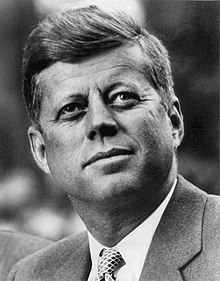
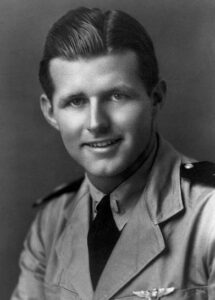 John F Kennedy never really wanted to be the President of the United States, but his dad wanted one of his sons, and maybe more that one of his sons to be the president, and Joseph Kennedy Sr made that fact well known to his boys. It was always assumed that Joseph Kennedy Jr would be the son to make their dad’s dreams come true, but life doesn’t always go quite the way we planned it.
John F Kennedy never really wanted to be the President of the United States, but his dad wanted one of his sons, and maybe more that one of his sons to be the president, and Joseph Kennedy Sr made that fact well known to his boys. It was always assumed that Joseph Kennedy Jr would be the son to make their dad’s dreams come true, but life doesn’t always go quite the way we planned it.
Joseph Kennedy Jr was the Golden Boy, touted by his father as a child destined to be “the future president of the nation.” He was a skilled athlete, charismatic, and intelligent, he was educated at Harvard and the London School of Economics. His father had groomed him to be president from a very young age, but it was not to be. When World War II drew the United States in, Joe Jr felt called to enlist. He joined the US Navy in 1941, and in 1943 was sent to England, where he flew with the British Naval Command and volunteered to take part in Operation Aphrodite.
Operation Aphrodite and Operation Anvil were the “World War II code names of United States Army Air Forces and United States Navy operations to use Boeing B-17 Flying Fortress and Consolidated PB4Y bombers as precision-guided munitions against bunkers and other hardened/reinforced enemy facilities, such as “Crossbow” operations against German long-range missiles,” specifically the V-3 Super Gun that Hitler was having built. During one of his missions, on August 12, 1944, the explosives aboard a plane flown by Joe Jr detonated early, and the eldest Kennedy son was gone.
As the second-oldest son in the Kennedy family, John F Kennedy was aware that the political aspirations of his father, Joe Sr, rested heavily on his older brother, Joseph P Kennedy Jr. When his brother was killed during WWII, John was also aware that the political torch had just passed to him…and so it did. It didn’t matter that John “was sickly – described by the family patriarch as ‘a very frail boy’ with ‘various troubles’ – and less willing to conform to his father’s will, he had been educated in much the same way as his older brother and was politically astute.” John had always been more of a passive observer. John apparently told one of his friends, “Now the burden falls on me.” Later, in an interview, he recalled what it was like to be shifted into his father’s spotlight, saying, “It was like being drafted. My father wanted his oldest son in politics. ‘Wanted’ isn’t the right word. He demanded it. You know my father.”
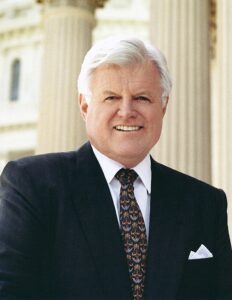
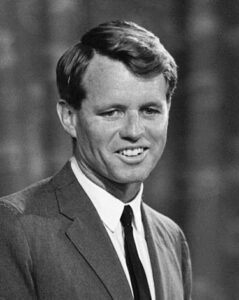
By 1947, John Kennedy was a member of the US Congress, the first office he held as he began his journey to becoming the President of the United States in 1960. His father was very determined and would stop at nothing to be able to say, “my son the President of the United States.” He also wanted his other sons, Robert and Ted to be in politics as well. Joe Sr’s “push of his sons” really was the indirect cause of the deaths of John and Robert, in my opinion. Of course, there were other factors, as we all know, but for them, being thrust into the spotlight did place a target on their backs. I don’t know if Robert and Ted were originally interested in politics, but the influence of their dad had to have played a big part in their future political lives.
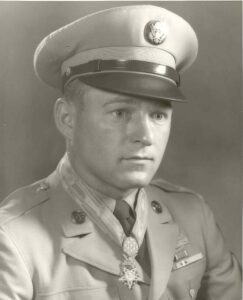 What makes a Medal of Honor winner? I don’t mean what act actually earns them the medal, but rather what causes them to get to that point and beyond. The Medal of Honor is the United States government’s highest and most prestigious military decoration that may be awarded to recognize American soldiers, sailors, marines, airmen, Space Force guardians, and coast guardsmen who have distinguished themselves by acts of valor…or great courage in the face of danger, especially in battle. I seriously doubt if the winner gave any thought to what he had to do to win the medal…there is just no time, and people don’t perform heroic acts just for the medal. It’s bigger than that.
What makes a Medal of Honor winner? I don’t mean what act actually earns them the medal, but rather what causes them to get to that point and beyond. The Medal of Honor is the United States government’s highest and most prestigious military decoration that may be awarded to recognize American soldiers, sailors, marines, airmen, Space Force guardians, and coast guardsmen who have distinguished themselves by acts of valor…or great courage in the face of danger, especially in battle. I seriously doubt if the winner gave any thought to what he had to do to win the medal…there is just no time, and people don’t perform heroic acts just for the medal. It’s bigger than that.
One man, Corporal Ronald Rosser, earned his Medal of Honor while serving in the 38th Regiment of the 2nd Infantry Division during the Korean War. Rosser enlisted in Army at the age of 17 and served from 1946 until 1949. His tour was finished, and he went home, but then his younger brother was killed in Korea in February of 1951. Rosser was devastated, but instead of wallowing in grief, he chose to honor his brother. Rosser re-enlisted to “finish his [brother’s] tour” of duty. Revenge was the only thing he could do for his brother now, and Rosser wanted revenge. In January of 1952, Rosser was a part of the regiment’s L Company. L Company was dispatched to capture an enemy-occupied hill. The battle there was fierce and enemy resistance caused heavy casualties. L Company was reduced to just 35 men from the initial 170 sent out, but they were ordered to make one more 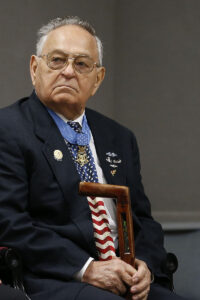 attempt to take the hill. Orders are orders, and as I said, the men didn’t really have time to think about how they could prove their courage. Rosser rallied the remaining men and charged the hill. Enemy fire continued to be heavy, but Rosser attacked the enemy position three times, killing 13 enemy soldiers, and although wounded himself, carried several men to safety. It truly was a courageous act, and one worthy of the Medal of Honor, but not one that Rosser had planned in any way. He just knew that he needed to save as many lives as he could, because he couldn’t live with himself if he didn’t. On June 27, 1952, Rosser was awarded the Medal of Honor by President Harry Truman at the White House for his heroism. On September 20, 1966, another of Rosser’s brothers, PFC Gary Edward Rosser, USMC, was killed in action, this time in the Vietnam War. Rosser requested a combat assignment in Vietnam but was rejected and subsequently retired from the army soon after. Rosser married Sandra Kay (nee Smith) Rosser who died November 28, 2014. He was the father of Pamela (nee Rosser) Lovell. Rosser died on August 26, 2020, in Bumpus Mills, Tennessee at the age of 90.
attempt to take the hill. Orders are orders, and as I said, the men didn’t really have time to think about how they could prove their courage. Rosser rallied the remaining men and charged the hill. Enemy fire continued to be heavy, but Rosser attacked the enemy position three times, killing 13 enemy soldiers, and although wounded himself, carried several men to safety. It truly was a courageous act, and one worthy of the Medal of Honor, but not one that Rosser had planned in any way. He just knew that he needed to save as many lives as he could, because he couldn’t live with himself if he didn’t. On June 27, 1952, Rosser was awarded the Medal of Honor by President Harry Truman at the White House for his heroism. On September 20, 1966, another of Rosser’s brothers, PFC Gary Edward Rosser, USMC, was killed in action, this time in the Vietnam War. Rosser requested a combat assignment in Vietnam but was rejected and subsequently retired from the army soon after. Rosser married Sandra Kay (nee Smith) Rosser who died November 28, 2014. He was the father of Pamela (nee Rosser) Lovell. Rosser died on August 26, 2020, in Bumpus Mills, Tennessee at the age of 90.
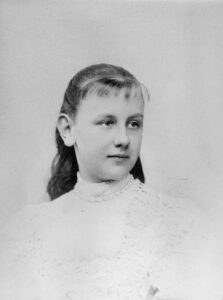
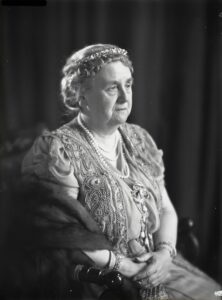 When a monarch becomes incapacitated or becomes monarch while under the age of 18, they can be placed under a regency, which became the normal procedure in 1937, with the passing of The Regency Acts. Prior to 1937, Regency Acts were passed only when necessary to deal with a specific situation. The Regency Act simply placed an adult, often a parent, or in the case of an incapacitated monarch, a spouse, in an advisory position over the monarch. The passing of The Recency Acts of 1937 made the procedure easier, because they realized that it could happen at any time.
When a monarch becomes incapacitated or becomes monarch while under the age of 18, they can be placed under a regency, which became the normal procedure in 1937, with the passing of The Regency Acts. Prior to 1937, Regency Acts were passed only when necessary to deal with a specific situation. The Regency Act simply placed an adult, often a parent, or in the case of an incapacitated monarch, a spouse, in an advisory position over the monarch. The passing of The Recency Acts of 1937 made the procedure easier, because they realized that it could happen at any time.
Wilhelmina Helena Pauline Maria, born August 31, 1880, was Queen of the Netherlands from 1890 until her abdication in 1948…reigning for nearly 58 years. Her reign was longer than any other Dutch monarch. The First and the Second World Wars, as well as the Dutch economic crisis of 1933, all took place during her reign. The really unusual thing about Queen Wilhelmina was that she became queen at the tender age of just 10 years old, under her mother, Emma of Waldeck and Pyrmont’s regency. Her father, King William III’s passing in 1890 brought about her ascension to the throne. Wilhelmina was their only child, and just a little girl, but that did not mean that she was incapable.
Following her ascension to the throne, Wilhelmina proved herself to be a great monarch. In a popular decision, she maintained Dutch neutrality during the First World War, while also solving many of her country’s industrial problems. Her successful business ventures made her the world’s first female billionaire in dollars. She also ensured that her family was one of seven European royal houses remaining in existence to this day. Of course, all that didn’t save her country from the German invasion of the Netherlands in 1940. At that time, Queen Wilhelmina was encouraged to flee to Britain, where she took charge of the Dutch government-in-exile. That did not mean that she was out of the spotlight and out of reach to her people. She frequently spoke to the nation over radio and came to be regarded as a symbol of the resistance. By 1948, she had already returned to the liberated Netherlands. She was the only survivor of the 16 monarchs who were sitting on their thrones at the time of her coronation.
By 1948, with her health declining, Wilhelmina abdicated the throne in favor of her daughter Juliana in 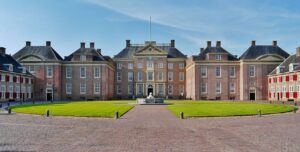 September of that year, and she retired to Het Loo Palace, where she died of cardiac arrest at the age of 82 on November 28, 1962. She was buried in the Dutch royal family crypt in the Nieuwe Kerk in Delft, on December 8, 1962. At her request and contrary to protocol, the funeral was completely in white to give expression to her belief that earthly death was the beginning of eternal life…something I really like. According to German Salic law, the House of Orange-Nassau-Dietz became extinct upon her death, but this rule is not recognized by royal Dutch succession laws. That law seems odd to me considering that her daughter, became queen after she abdicated.
September of that year, and she retired to Het Loo Palace, where she died of cardiac arrest at the age of 82 on November 28, 1962. She was buried in the Dutch royal family crypt in the Nieuwe Kerk in Delft, on December 8, 1962. At her request and contrary to protocol, the funeral was completely in white to give expression to her belief that earthly death was the beginning of eternal life…something I really like. According to German Salic law, the House of Orange-Nassau-Dietz became extinct upon her death, but this rule is not recognized by royal Dutch succession laws. That law seems odd to me considering that her daughter, became queen after she abdicated.
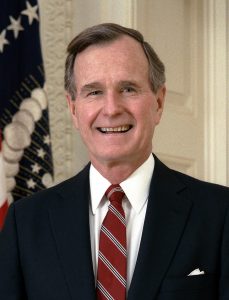 Sometimes, when a country is in turmoil, and there seems to be no way out, the only choice is to have an outside invasion…from a foreign power. Panama was in such a situation in 1989, and so on December 20, 1989, the United States Army spearheaded a carefully planned and well-executed attack designed to overwhelm the Panamanian Defense Forces (PDF) of dictator Manuel Noriega, who was a convicted drug trafficker and a brutal dictator. He rose to power when he joined the military and then quickly rose through the ranks. He was very motivated, and most likely had a planned agenda from the start. Once he was in power his brutality as well as his interference with activities in the Panama Canal area, got worse and worse. Something had to be done.
Sometimes, when a country is in turmoil, and there seems to be no way out, the only choice is to have an outside invasion…from a foreign power. Panama was in such a situation in 1989, and so on December 20, 1989, the United States Army spearheaded a carefully planned and well-executed attack designed to overwhelm the Panamanian Defense Forces (PDF) of dictator Manuel Noriega, who was a convicted drug trafficker and a brutal dictator. He rose to power when he joined the military and then quickly rose through the ranks. He was very motivated, and most likely had a planned agenda from the start. Once he was in power his brutality as well as his interference with activities in the Panama Canal area, got worse and worse. Something had to be done.
The election had been stolen, of course, and the United States, along with several other nations, needed to take back the area from the imposter, and restore the democratically elected government of Guillermo Endara, followed by the arrest of Noriega on drug trafficking charges. This was going to be the largest and most complex combat operation since the Vietnam War. Labeled, Operation Just Cause, and with nearly 26,000 combat troops deployed, just under half being from bases in the United States, the operation began. Two dozen targets were attacked throughout the country that day, using a wide spectrum of tactical operations including Military Operations on Urbanized Terrain (MOUT), Air-Assault, Airborne, and Special Forces. The operation was carefully planned out and conducted so as to take into account both parts of the mission…the operational aspects, as well as the political implications of forcibly removing Noriega from power. Not everyone in the world would look at this as being a justified operation. Through emphasis on realistic small-unit training, the U.S. Army successfully accomplished its mission. They decisively neutralized Noriega’s forces, restoring the elected democratic government, protecting American lives, and minimizing Panamanian casualties.
Initially planned as a gradual buildup of combat troops from the United States, the plan was significantly 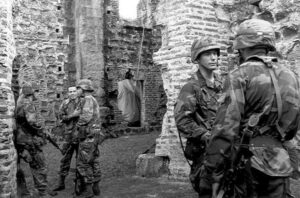 modified in early 1989 after Noriega increased attempts to intimidate American civilians and soldiers and after he orchestrated assaults against newly elected anti-Noreiga candidates. He was becoming too volatile to be allowed to continue his reign, so President George H W Bush ordered an additional 1,900 combat troops to Panama to increase security of American personnel and property, an operation known as known as Operation Nimrod Dancer…where do they get some of these names? He also appointed General Maxwell Thurman as the new US Southern Command commander. General Thurman envisioned the operation as a rapid take-down of the Panamanian Defense Forces, slightly different than President Bush saw it. Thurman wanted to capture Noriega quickly in order to prevent his troops from moving into the country’s interior in order to form an insurgency.
modified in early 1989 after Noriega increased attempts to intimidate American civilians and soldiers and after he orchestrated assaults against newly elected anti-Noreiga candidates. He was becoming too volatile to be allowed to continue his reign, so President George H W Bush ordered an additional 1,900 combat troops to Panama to increase security of American personnel and property, an operation known as known as Operation Nimrod Dancer…where do they get some of these names? He also appointed General Maxwell Thurman as the new US Southern Command commander. General Thurman envisioned the operation as a rapid take-down of the Panamanian Defense Forces, slightly different than President Bush saw it. Thurman wanted to capture Noriega quickly in order to prevent his troops from moving into the country’s interior in order to form an insurgency.
Training began in May 1989, and the early preparation and training was a key for the success of Operation Just Cause. The 193rd Infantry Brigade, which was the primary combat unit stationed near Panama City, increased the number of live-fire exercises and MOUT training. At that time, there were no MOUT training sites available, so battalion commanders adapted by constructing makeshift buildings for live-fire exercises. Soldiers practiced room-clearing as well as prisoner control, using the barracks. Soon to be sent to Panama…once the operation began, units of the 82nd Airborne Division and the 7th Infantry Division also increased training. The Panamanian Defense units were very close to the location of the American operations, so operational planners and unit commanders took advantage of increased security measures. These training exercises, Code-named Sand Flea, represented deliberate demonstrations of force aimed at securing American facilities. The good news 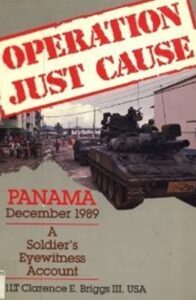 was that troops were familiar with their targets, since many of these facilities needed to be secured or were used as staging areas for the invasion. In addition, the exercises were run with such frequency that the enemy became desensitized to rapid movements of troops, helping to maintain the element of surprise that was crucial to success. For me, it still seems like they should have suspected something.
was that troops were familiar with their targets, since many of these facilities needed to be secured or were used as staging areas for the invasion. In addition, the exercises were run with such frequency that the enemy became desensitized to rapid movements of troops, helping to maintain the element of surprise that was crucial to success. For me, it still seems like they should have suspected something.
In the end, the careful planning and intensive training paid off. The operation was a good success, despite its complexity. The plan showed the ability to work with the military and political goals to rapidly destroy the enemy’s ability to fight They also managed to fight without needlessly endangering Panamanian lives or property. The training was a great success. The troops were able to quickly adapt to the unforeseen challenges of combat. Major military operations took only five days. Noriega surrendered on January 3rd and by January 12tb, Operation Just Cause was over. In less than a month, the US Army and other American Armed Forces had achieved complete victory.
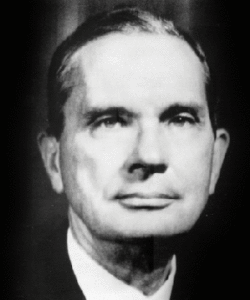 During their reign of terror, Japan, like Germany had their sights set on world domination. Japanese troops landed in Hong Kong on December 18, 1941, and an immediate slaughter began. The process started with a week of air raids over Hong Kong, which was a British Crown Colony at the time. Then on December 17, Japanese envoys paid a visit to Sir Mark Young, who was at that time, the British governor of Hong Kong.
During their reign of terror, Japan, like Germany had their sights set on world domination. Japanese troops landed in Hong Kong on December 18, 1941, and an immediate slaughter began. The process started with a week of air raids over Hong Kong, which was a British Crown Colony at the time. Then on December 17, Japanese envoys paid a visit to Sir Mark Young, who was at that time, the British governor of Hong Kong.
The envoys’ message was simple: “The British garrison there should simply surrender to the Japanese—resistance was futile.” The envoys were sent home with the following retort: “The governor and commander in chief of Hong Kong declines absolutely to enter into negotiations for the surrender of Hong Kong…”
The unsuccessful negotiations brought a swift wave of Japanese troops, who in retaliation for the refused surrender, landed in Hong Kong with artillery fire for cover and the following order from their commander: “Take no prisoners.” The troops quickly overran a volunteer antiaircraft battery, and the Japanese invaders roped together the captured soldiers. In a complete disregard for human life, a complete disregard for the Geneva Convention rules, or any rules of common decency, the Japanese proceeded to bayonet them to death. Even those who offered no 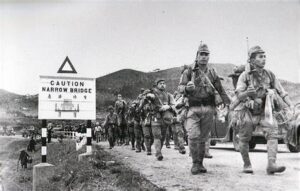 resistance, such as the Royal Medical Corps, were led up a hill and killed. They showed no mercy, just hate and evil. Following the initial slaughter, the Japanese took control of key reservoirs. With the water under their control, they threatened the British and Chinese inhabitants with a slow death by thirst. With their backs against a wall, the British finally surrendered control of Hong Kong on Christmas Day.
resistance, such as the Royal Medical Corps, were led up a hill and killed. They showed no mercy, just hate and evil. Following the initial slaughter, the Japanese took control of key reservoirs. With the water under their control, they threatened the British and Chinese inhabitants with a slow death by thirst. With their backs against a wall, the British finally surrendered control of Hong Kong on Christmas Day.
On that same day, the War Powers Act was passed by Congress, authorizing the president to initiate and terminate defense contracts, reconfigure government agencies for wartime priorities, and regulate the freezing of foreign assets. It also permitted him to censor all communications coming in and leaving the country. President Franklin D Roosevelt appointed the executive news director of the Associated Press, Byron Price, as director of censorship. Although invested with the awesome power to restrict and withhold news, Price took no extreme measures, allowing news outlets and radio stations to self-censor, which they did. Most top-secret information, including the construction of the atom 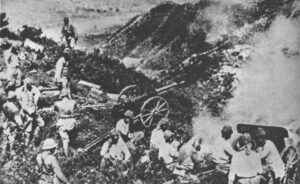 bomb, remained just that…strangely, but then those were different times.
bomb, remained just that…strangely, but then those were different times.
“The most extreme use of the censorship law seems to have been the restriction of the free flow of “girlie” magazines to servicemen…including Esquire, which the Post Office considered obscene for its occasional saucy cartoons and pinups. Esquire took the Post Office to court, and after three years the Supreme Court ultimately sided with the magazine.” It amazes me just how much times have changed. These days the “girlie” trash is totally acceptable, but truth is censored and lies are allowed. Too bad we are so far out from those days.
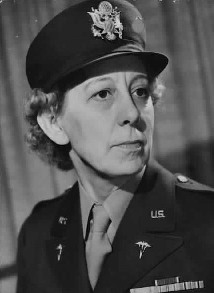 The attack on Pearl Harbor, on December 7, 1941, rocked the United States. It was so unexpected, but while it brought so much destruction, it also brought out so many heroes too. Orders did not need to be given, everyone simply jumped into action, without being told. Still, the destruction was so overwhelming, and the attack just kept coming. People were dodging bullets and bombs, as well as flying debris and suicide bombers. A heavy, choking, acrid smoke filled the air, making it very hard to breathe. There would be making deaths that day, but there would also be heroes.
The attack on Pearl Harbor, on December 7, 1941, rocked the United States. It was so unexpected, but while it brought so much destruction, it also brought out so many heroes too. Orders did not need to be given, everyone simply jumped into action, without being told. Still, the destruction was so overwhelming, and the attack just kept coming. People were dodging bullets and bombs, as well as flying debris and suicide bombers. A heavy, choking, acrid smoke filled the air, making it very hard to breathe. There would be making deaths that day, but there would also be heroes.
Lieutenant Annie G Fox was stationed at Hickam Airfield in Hawaii on December 7, 1941, and she was the chief nurse on duty that morning. When the attack began, she sprang into action to tend to the injured and dying service personnel on the base. For her outstanding performance, Fox was recommended for and awarded the Purple Heart, but she was not injured during the attack. Fox was presented the Purple Heart on October 26, 1942, at Hickam Field. Colonel William Boyd, Post Commander read the 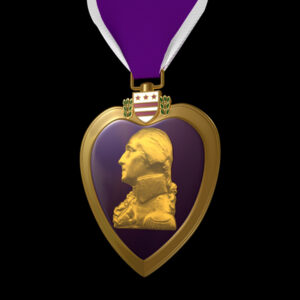 citation which was commanded by Brigadier General W E Farthing and signed by Colonel L P Turner, Air Corps Executive Officer.
citation which was commanded by Brigadier General W E Farthing and signed by Colonel L P Turner, Air Corps Executive Officer.
Then, in 1944 in a horrible twist of fate, the rules for receiving the Purple Heart changed, and Fox no longer qualified. The recipient needed to have sustained battle wounds. Fox’s medal was rescinded. She received the Bronze Star instead. I can understand the reasons behind the change, but it seems wrong that her medal that was legitimately earned in 1941, could be taken back in 1944. It should have been grandfathered or something. Nevertheless, the Purple Heart was not returned.
Purple Heart or Bronze Star aside, Lieutenant Annie Fox showed great spirit that day. In the face of great 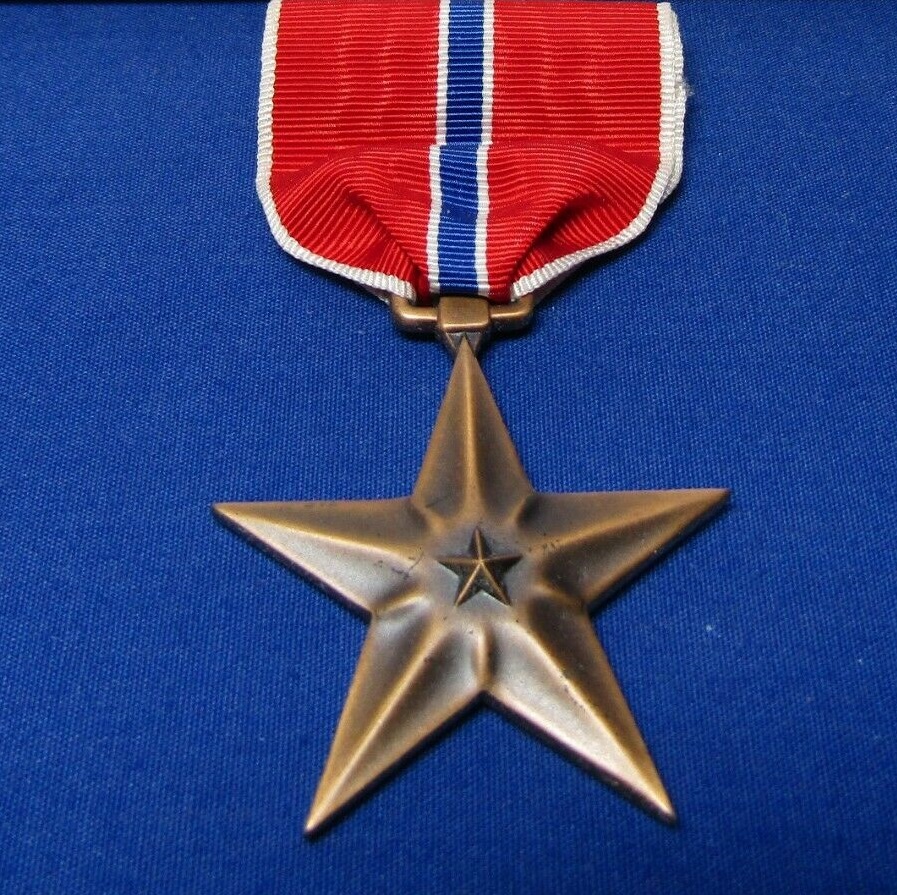 personal danger, she dodged the hail of bullets to reach many wounded people and she saved many lives. She could have been shot, bombed, breathed in poisonous gasses, or been hit by debris. It didn’t stop her. She saw the wounded, and she ran headlong into the danger, thereby saving her fellow man. Whether she was properly awarded the Purple Heart or not, she was definitely a hero.
personal danger, she dodged the hail of bullets to reach many wounded people and she saved many lives. She could have been shot, bombed, breathed in poisonous gasses, or been hit by debris. It didn’t stop her. She saw the wounded, and she ran headlong into the danger, thereby saving her fellow man. Whether she was properly awarded the Purple Heart or not, she was definitely a hero.
Annie Gayton Fox was born to Charles Fox and Deidamia (Gayton) Fox in East Pubnico, Nova Scotia, Canada, on August 4, 1893. She died at age 93 on January 20, 1987, in San Mateo County, California. Her years of service ran from July 3, 1918 through December 31, 1945. She retired as a Major in the US Army.
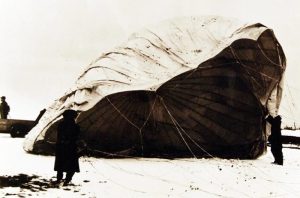 Thermopolis, Wyoming…a favorite destination for my husband and me. We take a trip there every year for our anniversary. I suppose that for many people, Thermopolis would seem too quiet, too small, and too little to do, but for us it is just perfect. With its hot springs and river walk trail, it is just perfect for us, and the hot spring ponds filled with goldfish of a size you simply cannot imagine until you see them. I’ve been told that they came from people getting rid of the small goldfish, and the warm water, along with the pond size, allowed the smaller goldfish to grow quite large. Thermopolis also had a dinosaur museum, although we have never been there. We go to the area for the hot tub and the trail for sure.
Thermopolis, Wyoming…a favorite destination for my husband and me. We take a trip there every year for our anniversary. I suppose that for many people, Thermopolis would seem too quiet, too small, and too little to do, but for us it is just perfect. With its hot springs and river walk trail, it is just perfect for us, and the hot spring ponds filled with goldfish of a size you simply cannot imagine until you see them. I’ve been told that they came from people getting rid of the small goldfish, and the warm water, along with the pond size, allowed the smaller goldfish to grow quite large. Thermopolis also had a dinosaur museum, although we have never been there. We go to the area for the hot tub and the trail for sure.
While Thermopolis might seem like the safest little out of the way place, there was a time when it was actually a target for an attack. During World War II, the Japanese set their sights on Wyoming. It makes little sense to me, but it was the target they chose. During World War II, the Japanese were experimenting with a new kind of bomb. It really wasn’t the greatest idea, but they did send some of them out. The problem with balloons is that it’s difficult to control where it is going…especially when it is unmanned. It’s hard to say what the exact target was, but on December 5, 1944, coal miners outside of Thermopolis heard something from the skies above and saw an explosion streak across the dark sky. When the object landed, it was discovered to be a Japanese Fu-Go Balloon Bomb. Though the Japanese launched 9,300 of these bombs, only about 300 made it to land, and the Thermopolis bomb was the first one to reach the United States. 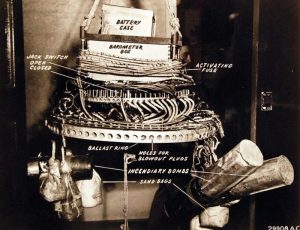
I find it hard to believe that the first Fu-Go Balloon Bomb made it all the way to Wyoming before exploding, when the only Fu-Go Balloon Bomb to actually kill anyone was one that landed near Bly, Oregon on May 5, 1945, that killed a pregnant woman and five children after they approached the unexploded balloon that had landed nearby. The balloon exploded as they investigated it. After that, the public was warned to stay away from the objects, but the news stories were still scarce. In fact, the Japanese only ever learned of the landing in Wyoming!! I have no idea how the media held themselves back.
Landing so many balloons in America was an impressive feat because the inter-continental attack was considered impossible at the time. Whatever the Japanese had hoped to gain by this relatively ineffective “bomb” is unknown, but it was a real failure. My guess is that most of them exploded over the ocean, doing no damage. Nevertheless, these massive balloons were a bit of a marvel…so to speak. They had to carry more than 1,000 pounds across the ocean, which was no easy task, especially for technology at the time. The fact that any of them made it here was impressive, I suppose. They were impressive balloons from a technologic standpoint. They were controlled by altimeters that kept the balloon in the newly discovered jet stream until it was over America, where it would fall to the ground and detonate…or so was the plan. The goal of the mission was to cause panic and fear in the United States, but a media blackout meant that these landings and 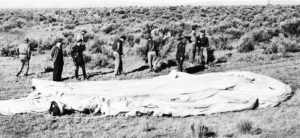 explosions went unreported. A blackout was the only way.
explosions went unreported. A blackout was the only way.
These attacks were actually quite amazing, because they were the longest ranged assaults in the history of warfare. It wasn’t until 1982 (during the Falkland Islands War) that the distance was topped. Today, the story of the Fu-Go Balloon Bombing is rarely told in Wyoming outside of Thermopolis, where it has supposedly become local folklore. Strange that I have never heard of it, even with the many years we have been spending our anniversary there. I will most definitely have to ask about it the next time we go.
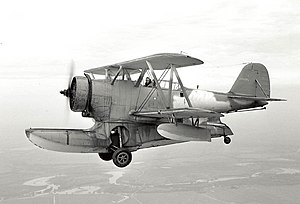 “Leave No Man Behind” is a creed often repeated and strictly followed by various units and soldiers. The interpretation of the phrase is applied to the treatment and extraction of the seriously wounded, the recovery of the body of military members killed in action, and the attempts to rescue or trade for prisoners of war. Technically, it didn’t really apply concerning the North Atlantic Ferry Route, also known as the Snowball Route. The route was a transport route used during World War II. It went from Goose Bay, Labrador to the one-way runway at Bluie West One on Greenland. Then, the route continued across to Keflavik, Iceland, for a refueling stop. From there it continued to Prestwick, Scotland and finally to England. The route was the United Kingdom’s World War II aerial lifeline, and was used by freighters, as well as European Theater of Operations-bound bombers and fighters…which means that my dad, Staff Sergeant Allen Lewis Spencer might have traveled this route on his way to Great Ashfield Army Airforce Base, Suffolk, England, where he was stationed during World War II.
“Leave No Man Behind” is a creed often repeated and strictly followed by various units and soldiers. The interpretation of the phrase is applied to the treatment and extraction of the seriously wounded, the recovery of the body of military members killed in action, and the attempts to rescue or trade for prisoners of war. Technically, it didn’t really apply concerning the North Atlantic Ferry Route, also known as the Snowball Route. The route was a transport route used during World War II. It went from Goose Bay, Labrador to the one-way runway at Bluie West One on Greenland. Then, the route continued across to Keflavik, Iceland, for a refueling stop. From there it continued to Prestwick, Scotland and finally to England. The route was the United Kingdom’s World War II aerial lifeline, and was used by freighters, as well as European Theater of Operations-bound bombers and fighters…which means that my dad, Staff Sergeant Allen Lewis Spencer might have traveled this route on his way to Great Ashfield Army Airforce Base, Suffolk, England, where he was stationed during World War II.
I don’t imagine that landings at Bluie West One on Greenland would be easy on the best of days, and if the weather was bad, it was going to be far worse, and if there was any airplane trouble, it was really going to get dicey. On November 5, 1942, a Douglas C-53 Skytrooper, a paratroop-outfitted version of the C-47, was heading westbound on the Snowball Route. The plane was empty except for its crew of two and three military passengers returning to the United States from Scotland. The Skytrooper never made it. The crew radioed that they had to make a forced landing on the Greenland ice cap and giving an approximate position. The airplane was intact, and apparently there were no injuries.
Now began the hardest part of the situation…rescue. The C-53 fired flares for the next two nights. The flares were seen at a weather station on the Greenland coast, and rescuers set out toward them on motorized sleds. The group expected to be back in three or four days, if the weather held, but their sleds broke down, and they never found the C-53. After that, the flares stopped, and the plane and crew would never be seen or heard of again. Meanwhile, a variety of eastbound B-17s, B-25s, and C-47s that were either already over Greenland or gassing up at Narsarsuaq, the famous Bluie West One base, were detoured for search duty. One of them was a B-17F originally bound for England. On November 9 it took off from Bluie West One, assigned to search the area where the C-53’s flares had last been seen. Aboard the Flying Fortress were its original six-man transport crew, an Army enlisted man they had picked up at Goose Bay and two volunteer observers who had jumped aboard at Bluie West One to help out…an offer they would no doubt regret. 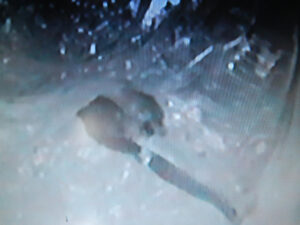
Just as the B-17 reached its search area, it ran into bad weather. Following pilot, Lieutenant Armand Monteverde’s 180 around the weather, he headed back into the search grid, only to fly into a sudden whiteout. Suddenly, the sky, clouds, and ice all looked the same. It was as if the horizon disappeared. Monteverde had no choice but did the only thing he could and banked away to fly back to clearer air. But the B-17’s left wingtip caught the ground, and the airplane skidded onto the ice cap. It was a hard crash, with the bomber traveling only about 200 yards before splitting apart just behind the wings. The Fortress had come down atop an active glacier, spider-webbed with crevasses. It was like landing in the middle of a minefield. The entire broken-off tail section hung over a large open chasm, with another chasm yawning just in front of the bomber. One crewman suffered a broken arm, and others had bad cuts and bruises. Just four were unhurt.
Meanwhile, an RAF Douglas Havoc out of Gander, being ferried through a snowstorm by a Canadian crew, flew past its refueling stop at Narsarsuaq and put down on the ice before its tanks ran totally dry. The Canadians set out on foot for the coast. On November 18, a search plane out of BW-1 spotted the Havoc, but its crew was gone. Five days later, a Grumman J2F-4 Duck from the Coast Guard cutter Northland, landed on the southeast coast of Greenland. They found the crew’s trail, and followed their snowshoe tracks. The men had actually fabricated snowshoes from pieces stripped from the Havoc. That night, Northland fired off flares, and the Havoc crew spotted them. The in an act much like burning his bridges, one of the pilots responded by setting fire to his coat, which in Greenland in late November is a good way to freeze to death. Fortunately, the blazing parka was spotted by crewman aboard Northland, which put a rescue party ashore and found the Havoc crew.
On the morning of November 28, the cutter Northland dispatched their Grumman J2F-4, a plane known as the Duck into the hunt as well. On board were Coast Guard pilot Lieutenant John Pritchard Jr and his radioman, Petty Officer 1st Class Benjamin Bottoms. They took off for the B-17 crash site. Pritchard overflew the B-17 and radioed its crew for landing advice. “Don’t try it,” Corporal Howarth replied, “crevasses everywhere.” Colonel Balchen, coincidentally, was overhead at that moment in the DC-4, making a supply drop. Nevertheless, Pritchard found a smooth, sloped, apparently crevasse-free area a mile north of the B-17 and carefully touched down with his landing gear extended. He landed uphill, and the Duck quickly came to a stop. It was the very first successful landing of an airplane on the surface of Greenland’s ice cap. The Duck made two trips to rescue 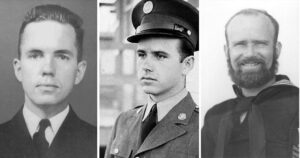 the men in the B-17, the first successful; and the second with passenger, radioman Loren Howarth, ended in a crash that would leave the plane lost for seven decades.
the men in the B-17, the first successful; and the second with passenger, radioman Loren Howarth, ended in a crash that would leave the plane lost for seven decades.
Fast forward…to 2012, when a company by the name Global Exploration and Recovery found the remains of the Duck in 38 feet of ice, with its crew and passenger still onboard. GEaR believes in “Leave No Man Behind,” and does its best to find these downed war birds to bring them and their crew…finally home, if they are still in the planes. What a noble effort.
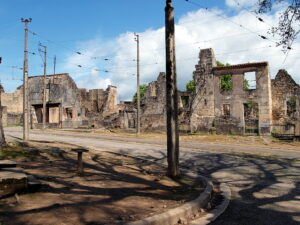 During World War II, the Nazis had a little problem…the resistance. Of course, the resistance had to be very careful, and stay in hiding much of the time. There were informants, the police, and the enemy soldiers to watch out for. It was hard to tell sometimes who was an enemy and who was a friend. Every day was spent in hiding, and often in fear for their lives.
During World War II, the Nazis had a little problem…the resistance. Of course, the resistance had to be very careful, and stay in hiding much of the time. There were informants, the police, and the enemy soldiers to watch out for. It was hard to tell sometimes who was an enemy and who was a friend. Every day was spent in hiding, and often in fear for their lives.
With the Allied invasion of Normandy, the French resistance saw an opportunity to really increase their activity in the area. Of course, there were more fighter pilots in need of an escape routes, and soldiers who were wounded, but they also saw a way to strike back. One such way was to kidnap and kill Helmut Kampfe, a major in the Waffen-SS Das Reich. Of course, all resistance action came at a cost. Following the killing of Kampfe, a battalion of the regiment known 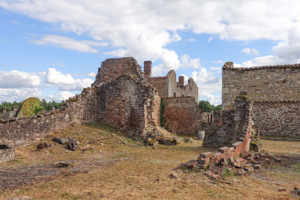 as Der Fuhrer Regiment was sent to the small village of Oradour-sur-Glane.
as Der Fuhrer Regiment was sent to the small village of Oradour-sur-Glane.
Of course, the village was innocent, but someone had to pay so Commander Adolf Diekmann ordered the town sealed off, the men locked in barns, and the women and children confined to the church. Nobody knows why the town was chosen for this attack. Maybe it was due to the town’s proximity to the regiment, or maybe it was because the Germans knew the village was defenseless. Whatever it was, it was about to get brutal.
Diekmann ordered his unit to begin shooting. It was like a terrorist attack. The residents were first incapacitated by gunshots to the legs. When they  were unable to move, the barns and church were doused with gasoline and ignited. Hundreds of the villagers died that day, nearly all the residents of the area. Many of the SS who were there that day were Alsatian French nationals who had been forced into the German military, and almost all them escaped punishment, which is a crime in itself. After World War II, French president Charles De Gaulle declared that the village was never to be restored. It was to stand as it was after the attack, as a reminder of the brutal Nazi occupation. Brutality like that should never be forgotten, and maybe the evidence should stand as a reminder of the evil that exists in some people. Lest we forget.
were unable to move, the barns and church were doused with gasoline and ignited. Hundreds of the villagers died that day, nearly all the residents of the area. Many of the SS who were there that day were Alsatian French nationals who had been forced into the German military, and almost all them escaped punishment, which is a crime in itself. After World War II, French president Charles De Gaulle declared that the village was never to be restored. It was to stand as it was after the attack, as a reminder of the brutal Nazi occupation. Brutality like that should never be forgotten, and maybe the evidence should stand as a reminder of the evil that exists in some people. Lest we forget.

